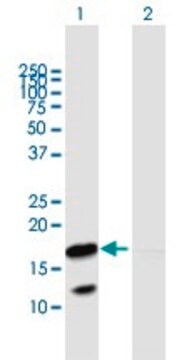2210-M
Cell Proliferation Assay Kit, WST dye; ELISA based
About This Item
Produtos recomendados
reatividade de espécies
mouse, rat, human
técnica(s)
ELISA: suitable
Descrição geral
Aplicação
1. Culture cells (0.1-5x104/well in a 96-well microplate in a final volume of 100 μL/well culture medium in the absence or presence of various amounts of factors tested.Note: For toxicity assays, use more cells to start with (e.g. 5x104 - 5x105 cells/well).
2. Incubate cells for 24-96 hours.
3. Add 10 μL/well WST-1/ECS solution to each well.Note: If the cells are cultured in a different volume of culture medium, increase or decrease the amount of WST-1/ECS solution accordingly.
4. Incubate the cells for 0.5 to 4 hours in standard culture conditions.Note: The appropriate incubation time depends on the individual cell type and cell concentration used. Therefore it is recommended that you determine the optimal incubation time for each experimental setup used.
5. Shake thoroughly for one minute on a shaker.
6. Measure the absorbance of the treated and untreated samples using a microplate reader at 420-480 nm depending on the filters available. The reference wavelength should be more than 600 nm. Note: Using the same amount of culture medium and WST-1/ECS solution in an empty well as a blank position for the microplate reader.
Componentes
Armazenamento e estabilidade
Exoneração de responsabilidade
Código de classe de armazenamento
10 - Combustible liquids
Classe de risco de água (WGK)
WGK 3
Certificados de análise (COA)
Busque Certificados de análise (COA) digitando o Número do Lote do produto. Os números de lote e remessa podem ser encontrados no rótulo de um produto após a palavra “Lot” ou “Batch”.
Já possui este produto?
Encontre a documentação dos produtos que você adquiriu recentemente na biblioteca de documentos.
Nossa equipe de cientistas tem experiência em todas as áreas de pesquisa, incluindo Life Sciences, ciência de materiais, síntese química, cromatografia, química analítica e muitas outras.
Entre em contato com a assistência técnica





